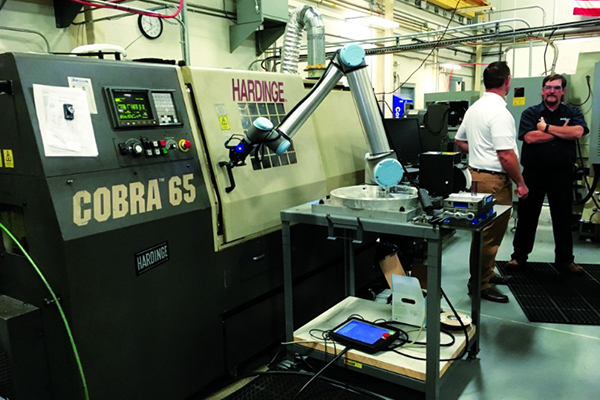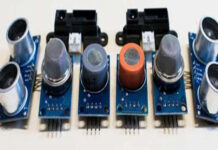A class of human-scale robots known as “collaborative robots” are efficient and mobile on the work floor. Further, they can cooperate with human agents in challenging environments. They are built with safety features like overcurrent detection, passive compliance, and integrated sensors to work with people. Furthermore, the sensors built into the cobot detect these external forces, and if the force is too great, the robot stops moving. Additionally, a combination of basic technology and sensor data, such as artificial intelligence (AI) and machine learning (ML), helps these robots navigate in different scenarios & make decisions in real-time.
For instance, Yaskawa launched the HC20XP (Human-Collaborative Robot) in March 2020. It has precise hand-guided commands for quick robot system deployment. The most recent cooperative robot is made for situations in which robots must work safely next to or close to people. The market’s first industrial cobot with an IP67 rating is designed for prolonged use in wet or splashy conditions.
According to a recent study by Allied Market Research, the global industrial cobot market is predicted to register a notable CAGR from 2019 to 2026.
Increased Demand for Automation in many Industrial Processes fuels the Market’s growth
In general, automation solutions can significantly reduce delivery costs. This is made simpler by recent developments in robotics. It allows companies in a variety of industries to operate autonomously with increased human proficiency and capacity. Moreover, labor shortages, higher benefits, and pay rates, and longer onboarding and training are key factors. They are influencing the deployment of robots. In distribution, fulfillment centers, and warehousing, these automated solutions are becoming more widespread. Additionally, a growing number of people are embracing robotics. As technology develops and applications grow in scope and versatility, manufacturing operations are expanding throughout the geographical area.
Furthermore, cobots are important for industrial automation because they can manage a variety of crucial tasks and business operations. Besides this, they are capable of performing sophisticated, repetitive tasks with accuracy even in risky circumstances. Cobots have thus been used in production facilities across a wide range of industries. For instance, a survey by UiPath found that over 88% of businesses believe automation would increase human productivity. Further, it would be most successful when combined with people.
New Technologies:
The leading companies in the market are innovating new technologies, and engaging in mergers, investments, and acquisitions. For example, the collaborative robots in the TechMan AI Cobot series, which combines a strong and accurate robot arm with a native artificial inferencing engine and an advanced vision system, were introduced by TechMan Robot Inc. in November 2022. A complete set of AI software, including TM AI+ AOI Edge, TM Image Manager, TM 3DVision, and TM AI+ Training Server is entailed with the series of intelligent robotic arms, which enables businesses to adapt knowledge and trained their systems to work best with their applications.
In February 2023, Universal Robots (UR) and Rapid Robotics (RR) announced a new collaboration in which UR would supply Rapid Robotics with collaborative robot arms for deployment throughout North America. By filling positions that manufacturers cannot fill with robots, the company can lower more barriers to automation because of this agreement.
The COVID-19 Impact-
- The COVID-19 pandemic had a negative impact on the industrial cobot market. The lockdown imposed by the governments of many countries disrupted transportation systems and also resulted in a shortage of labor.
- However, in the post-COVID-19 scenario, collaborative robots are becoming more and more prevalent due to their capabilities and lower cost. For example, some hospitals and fast-food chains employ these robots to distribute hand sanitizers and carry out temperature checks. Additionally, food services, supermarkets, and restaurants have started using robots to prepare food and meal delivery orders.
- Furthermore, the warehousing and logistics sector is switching to collaborative robots to increase the effectiveness of distribution, packaging, and shipping. However, companies in all these sectors are increasingly considering implementing automation at work to adhere to pandemic precautions, lower the risk of infection, and protect employee health. Thus, the market for industrial cobots has witnessed growth.
About the author:
Harshada Dive is an engineer by qualification. She has previous experience working as a customer service associate. As an associate content writer, she loves to experiment with trending topics. Harshada also enjoys gardening and listening to motivational podcasts.















